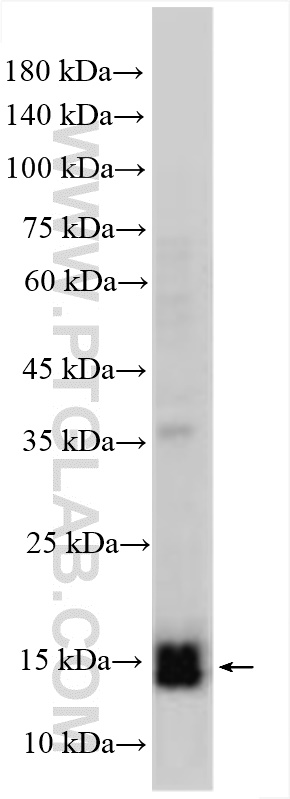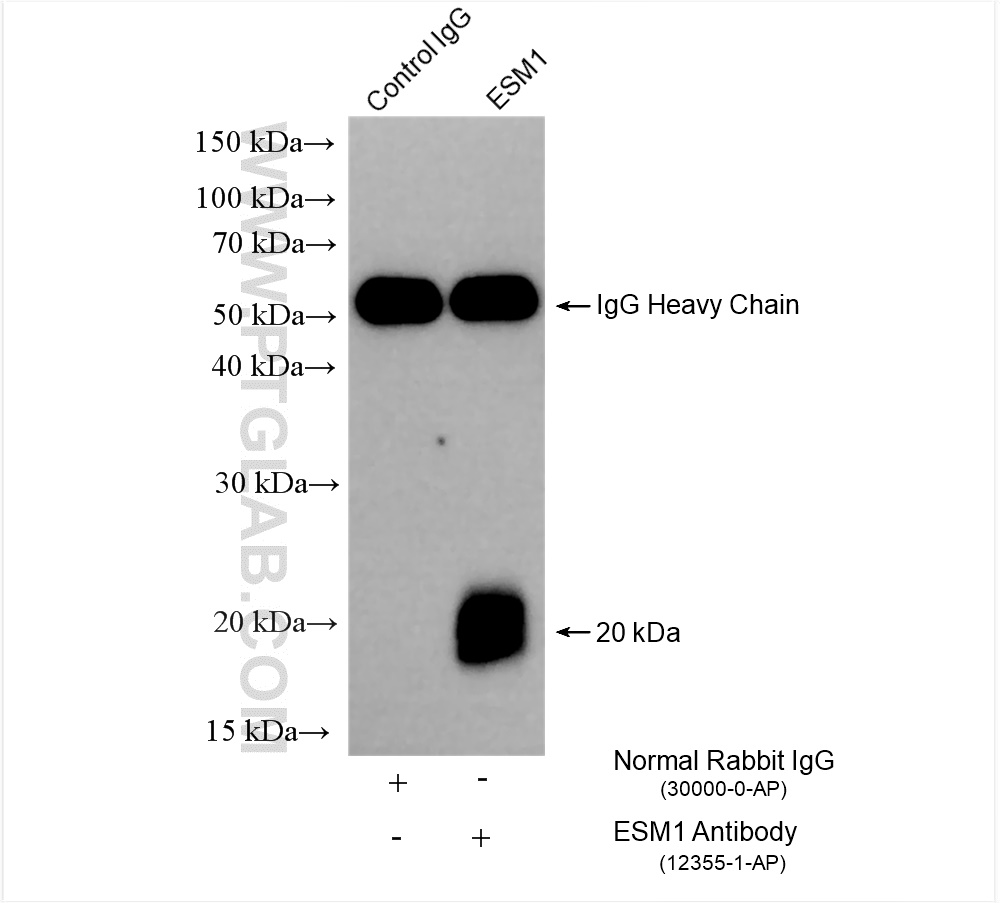验证数据展示
经过测试的应用
| Positive WB detected in | HUVEC cells |
| Positive IP detected in | HUVEC cells |
推荐稀释比
| 应用 | 推荐稀释比 |
|---|---|
| Western Blot (WB) | WB : 1:200-1:1000 |
| Immunoprecipitation (IP) | IP : 0.5-4.0 ug for 1.0-3.0 mg of total protein lysate |
| It is recommended that this reagent should be titrated in each testing system to obtain optimal results. | |
| Sample-dependent, Check data in validation data gallery. | |
产品信息
12355-1-AP targets ESM1 in WB, IP, ELISA applications and shows reactivity with human samples.
| 经测试应用 | WB, IP, ELISA Application Description |
| 经测试反应性 | human |
| 免疫原 | ESM1 fusion protein Ag3019 种属同源性预测 |
| 宿主/亚型 | Rabbit / IgG |
| 抗体类别 | Polyclonal |
| 产品类型 | Antibody |
| 全称 | endothelial cell-specific molecule 1 |
| 别名 | ESM-1, Endothelial cell-specific molecule 1, Endothelial cell specific molecule 1, endothelial cell molecule 1, endocan |
| 计算分子量 | 184 aa, 20 kDa |
| 观测分子量 | 20 kDa |
| GenBank蛋白编号 | BC011989 |
| 基因名称 | ESM1 |
| Gene ID (NCBI) | 11082 |
| RRID | AB_3669137 |
| 偶联类型 | Unconjugated |
| 形式 | Liquid |
| 纯化方式 | Antigen affinity purification |
| UNIPROT ID | Q9NQ30 |
| 储存缓冲液 | PBS with 0.02% sodium azide and 50% glycerol , pH 7.3 |
| 储存条件 | Store at -20°C. Stable for one year after shipment. Aliquoting is unnecessary for -20oC storage. |
背景介绍
ESM1 is a secreted protein mainly expressed in the endothelial cells. The deduced 184-amino acid protein is cysteine rich with an N-terminal hydrophobic signal sequence. Expression of ESM1 was tested by Northern blot analysis and RT-PCR and was found to be constitutive in a HUVEC cell line, but not in any other cell line tested. Constitutive ESM1 expression in human tissue was restricted to lung.
实验方案
| Product Specific Protocols | |
|---|---|
| WB protocol for ESM1 antibody 12355-1-AP | Download protocol |
| IP protocol for ESM1 antibody 12355-1-AP | Download protocol |
| Standard Protocols | |
|---|---|
| Click here to view our Standard Protocols |

